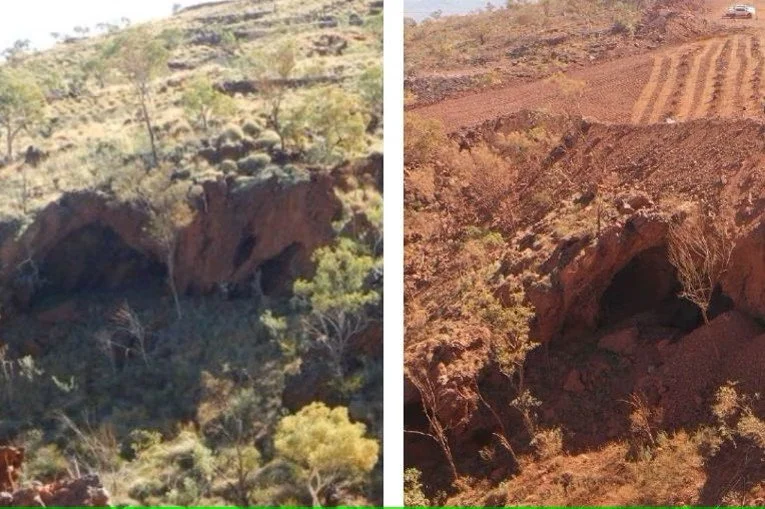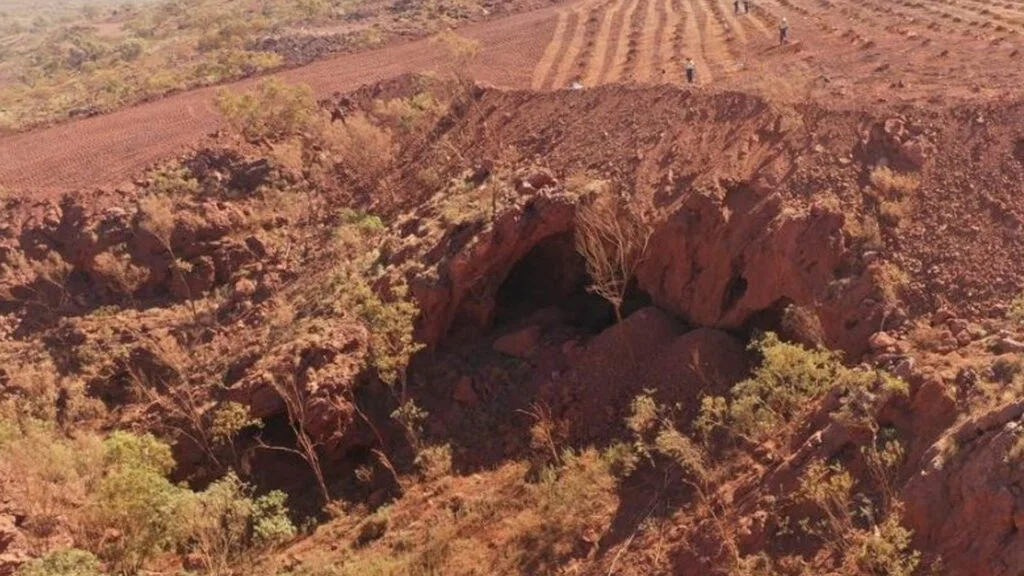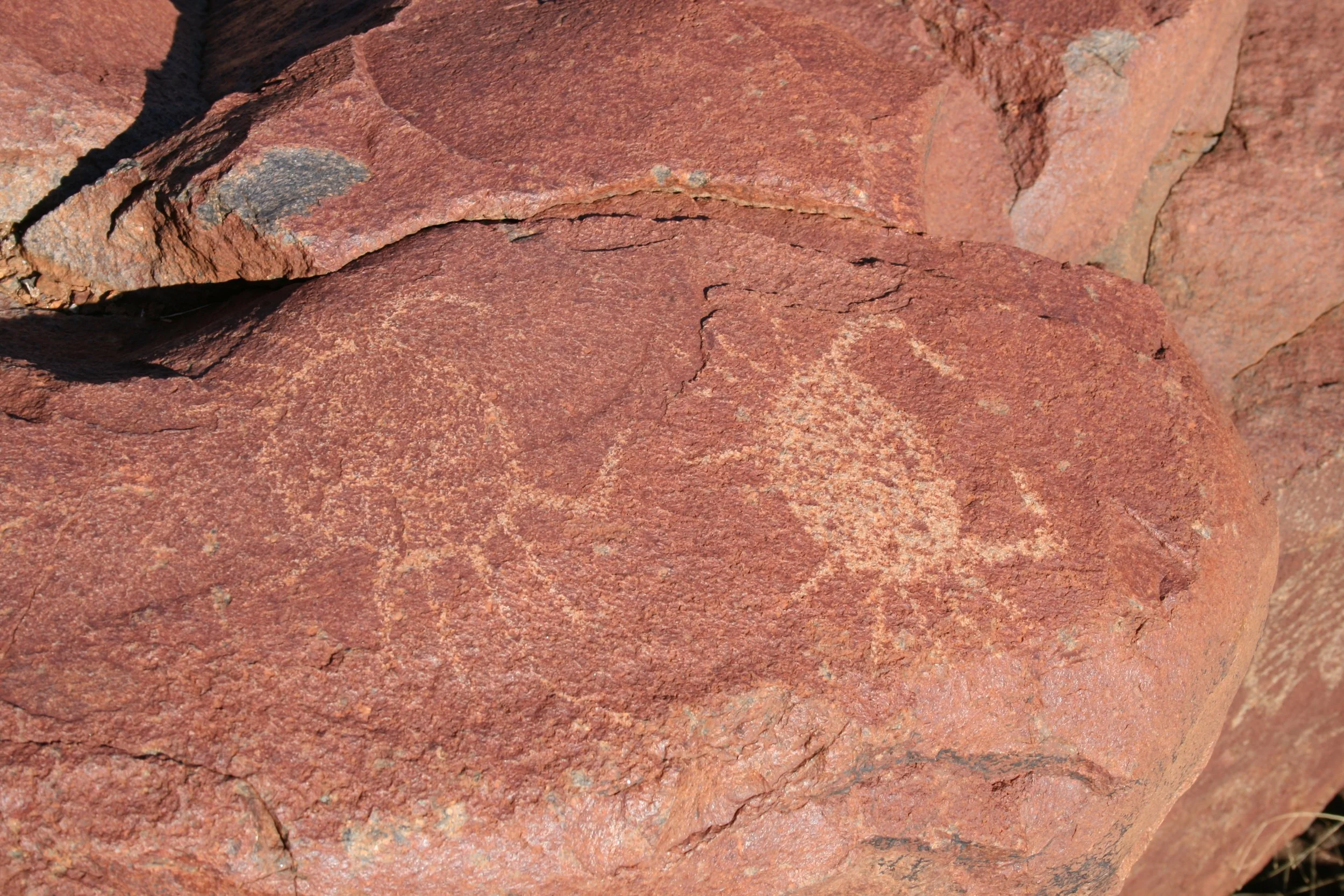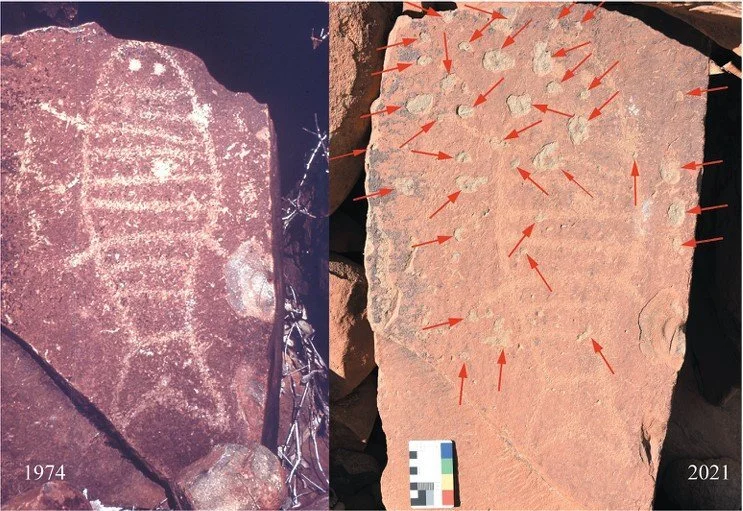FIVE YEARS ON: JUUKAN GORGE STILL CASTS A LONG SHADOW OVER INDIGENOUS HERITAGE PROTECTION
Juukan Gorge ancient cave before and after the Rio Tinto blast.
BY TANGIORA HINAKI
Five years after the destruction of Juukan Gorge by mining giant Rio Tinto deep flaws remain in Western Australia’s Aboriginal heritage protection laws leaving other Indigenous cultural sites at risk, according to an anthropologist and archaeologist with three decades of experience in the region.
Despite small legislative changes in response to the Juukan Gorge tragedy Indigenous cultural sites - such as the Burrup Peninsula’s rock art - remain at risk from future industry developments, Robin Stevens told Ngaarda Media.
Anthropologist and archeologist Robin Stevens
Mining companies still dominate the heritage process, Mr Stevens believes, claiming Traditional Owners remain sidelined from decision-making notwithstanding a parliamentary inquiry into Australia’s heritage legislation.
“They write the scopes, they have teams available and they go ‘Well, this is how we are going to do this’,” Mr Stevens said.
“You have mining representatives controlling the heritage process, not an independent body. It bothers me still that really the whole way the thing is geared is really still be companies controlling the process and (liaising) directly with government.”
‘Significant distress’
In 2013 the Western Australian government approved Rio Tinto's plan to blow up Juukan Gorge to access high-grade iron ore for its Brockman 4 mine, located in Puutu Kunti Kurrama and Pinikura (PKKP) country, 60 kilometres northwest of Tom Price.
The blast, which went ahead on May 24, 2020, destroyed the Juukan-2 ancient rock shelters that held sacred cultural significance, and demonstrated 46,000 years of continuous human habitation of the region by the PKKP, the traditional owners of Juukan Gorge.
Juukan Gorge anciet rock shelter
In a statement to mark the fifth anniversary of the blast, the PKKP Aboriginal Corporation asked for privacy to “mourn their significant loss” and said the destruction continued to cause “significant distress”. Members of the PKKP community will meet at Juukan Gorge tomorrow to mark the anniversary.
“What happened five years ago will never be forgotten by the PKKP people,” the statement said. “To ensure such tragedies to not happen again we continue to work with Rio Tinto and other miners to implement effective and fair co-management agreements for their activities on PKKP Country.”
Legislative change is crucial
Updated Aboriginal cultural heritage laws designed to prevent similar destruction in the future were introduced to the WA parliament in 2023 but overturned five weeks later following opposition from farmers and landowners.
The 1972 Aboriginal Heritage Act was reinstated with updates, including enhanced consultation requirements and clearer guidelines for land users. This year, the federal government reached an agreement between the Minerals Council of Australia and the First Nations Heritage Protection Alliance to establish cultural authority.
Mr Stevens said while he had noticed “slow progress” from mining companies and confidence for stronger pushback from Aboriginal organisations since Juukan, control of crucial heritage surveys remained with big mining companies.
Importantly, mining companies can still seek consent under Section 18 of the Aboriginal Heritage Act 1972 to apply to use land for a wide range of activities, from road building to drilling.
While updates now allow more rigorous scrutiny of Section 18 approvals, they still allow actions that would otherwise breach the Act’s Section 17, which prohibits damaging or altering Aboriginal sites.
Section 18 approval is what led to Rio Tinto’s destruction of Juukan Gorge.
“If a minister says well, you have a Section 18, a company has permission to damage a site or impact a site,” Stevens says.
Importantly – Traditional Owners do not have a statutory right to appeal Section 18 approvals and in most cases cannot formally challenge the government’s decision. The legislation does allow for judicial review.
In 2024 Equinox Resources applied for a Section 18 to drill at its Hammersley Iron Ore Project. The drilling would impact two Aboriginal heritage sites and the Wintawari Guruma Aboriginal Corporation wants the plans abandoned. Western Australian Aboriginal Affairs Minister Toni Buti refused consent suggesting the process can deliver positive outcomes for traditional owners. Equinox is hoping to overturn the decision in the State Administrative Tribunal.
“I would say that while things have improved in some ways (since Juukan), the struggle to value, truly value Indigenous heritage and social connections to the land, we have still got a long way to go,” Mr Stevens said. “I still encounter people in the mining industry who just don’t get it.”
He said the trauma of Juukan did deliver some positive outcomes: “There’s been a slow progress in changing outdated agreements. It’s happening but it’s very slow.”
Sean-Paul Stephens, CEO of the Ngarluma Yindjibarndi Foundation Ltd (NYFL), says the legislation was a “key failure” that led to Juukan Gorge’s destruction.
“I think really critical is making sure there’s reform to legislation,” he said. “I think there’s a lot of work to be done and a lot of research to be done on reform of federal and state legislation.”
Is Murujuga ancient rock art next?
Weak laws that do not sufficiently consider the rights of Traditional Owners and mean the risk of another Juukan-style disaster remains very real, NYFL’s Mr Stephens says.
He told Ngaarda Media that rock art found in Murujuga National Park on the Burrup Peninsula near Karratha is under threat from emissions produced by nearby liquefied natural gas production at Burrup Hub, led by Woodside Energy in joint venture with BP and Japanese gas giant Mitsui.
The art gallery features up to one million petroglyphs created by local Aboriginal people over thousands of years with some art as old as 40,000 years.
“It’s one of the most important rock art precincts in the world, possibly the most important one,” Mr Stephens said. “And yet on the other hand we constantly have industries going ‘can we just creep in just a little bit? You know, we won’t damage it all. We’ll just get a little bit closer’. They constantly want to compromise.”
Depiction of a crab found at Murujuga, Burrup Peninsula
The federal government is due to decide whether to extend the North West Shelf project on the Burrup for another 40 years, until 2070, after earlier delaying the decision.
Environmental groups and Traditional Owners from the Murujuga Aboriginal Corporation want a decision to wait until results of a five year study into emissions standards is released next year.
Traditional owner: “I am furious”
The Burrup Peninsula, known as Murujuga to traditional custodians, was nominated for UNESCO World Heritage listing by the federal government in 2023 but a decision on its inclusion is yet to be made.
However, the federal government yesterday rejected the concerns of environmental groups about the proposal, bringing its approval one stap closer.
“On the one hand there is this awareness that the Burrup has to be maybe not just on a national register, it has to be on an international one,” anthropologist Robin Stevens says. “Why doesn’t the government, which has had plenty of opportunity, say ‘You know what we don’t want any more industry here at all’.”
A photograph showing deterioration of the images over time.
Murujuga traditional custodian Raelene Cooper has launched legal action in the federal court under Section 10 of the Aboriginal and Torres Strait Islander Heritage Protection Act, against the Albanese government’s new Minister for Water and the Environment Murray Watt.
Ms Cooper’s legal claim – filed yesterday by her Sydney lawyers Johnson Legal - is to compel Mr Watt to make a determination on her Section 10 cultural heritage assessment, first submitted to the federal government three years ago when Tanya Plibersek was environment minister.
“I originally brought this application in early 2022 when I learned how my cultural heritage would be affected if industry was allowed to continue expanding on Murujuga,” she said.
Ms Cooper said a 50-year extension to the North West Shelf project would be “a death sentence to the oldest and largest rock site on earth”.
“I am furious that the minister would make a decision to lock in ongoing and irreversible damage to my country before addressing my application,” she said. “I have been sickened to witness the devastation caused by the construction of the Perdaman fertiliser facility approved by Minister Plibersek without consent of traditional custodians.”





